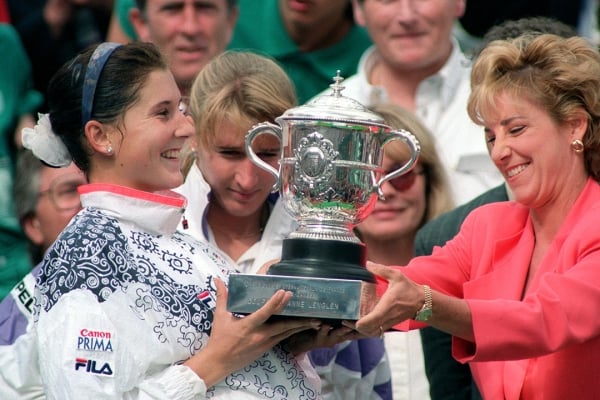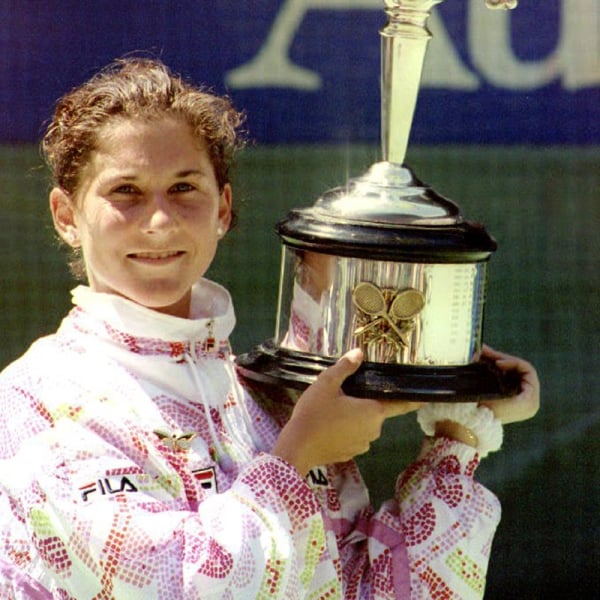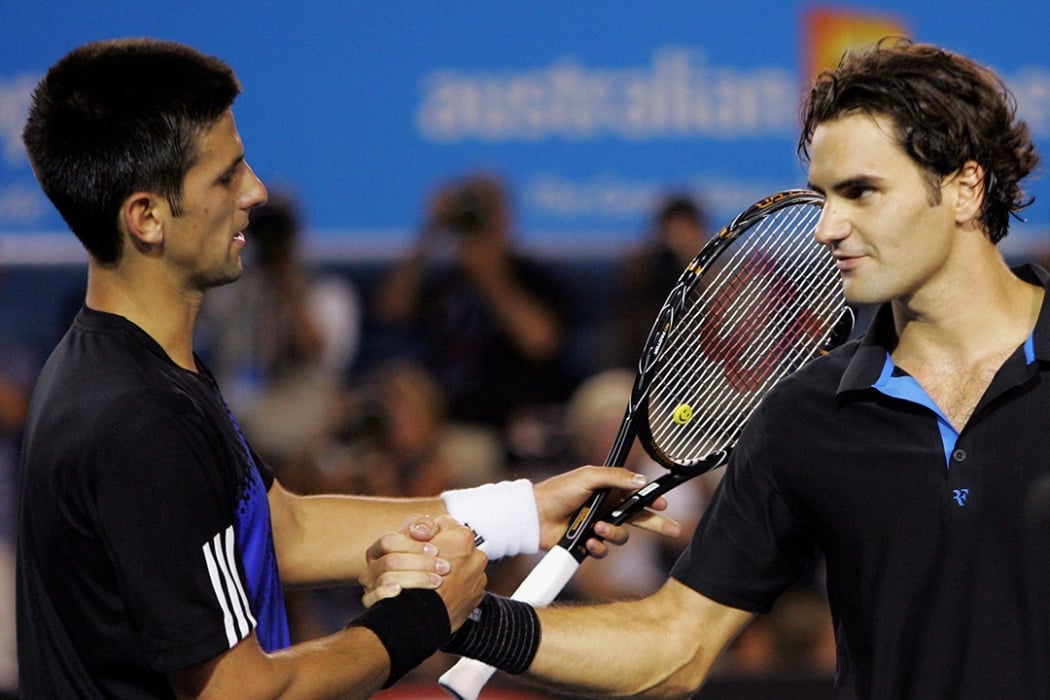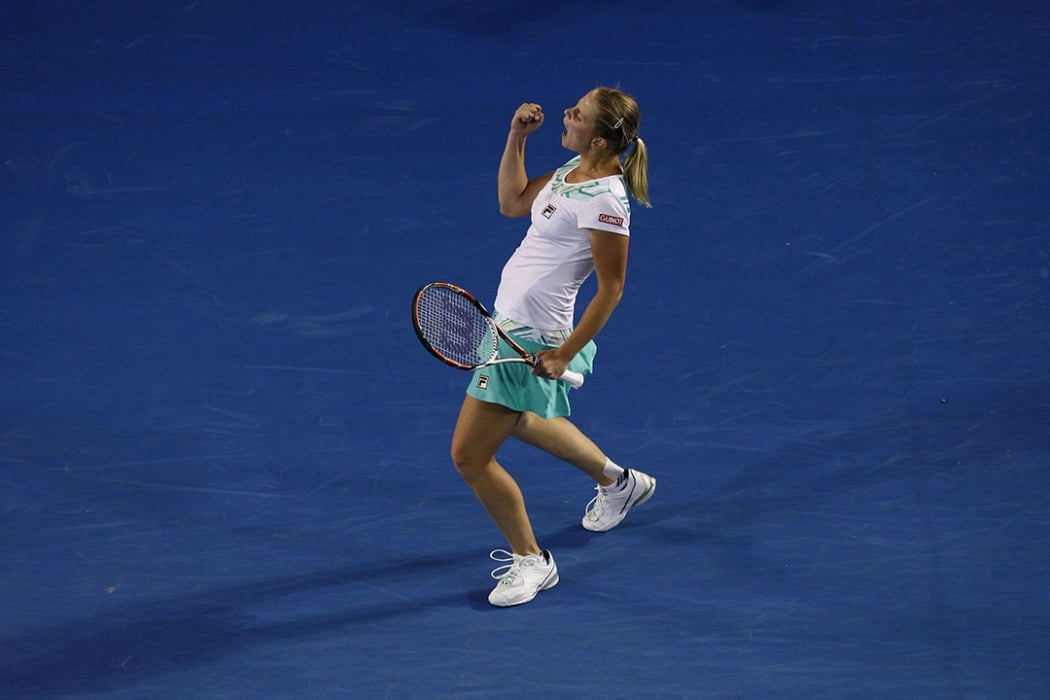It feels appropriate, so soon after a classic 2023 Wimbledon final between the world’s top two men, that we celebrate a similarly-brilliant battle between the world’s top two women 30 years earlier.
Monica Seles and Steffi Graf clashed in a much-hyped Australian Open 1993 final, pitting the sport’s two biggest rivals against one another. This is the latest full match to be published on the Australian Open YouTube channel, with many more archive matches set for release each week.
Entering the final, Graf had won 11 majors and Seles seven, and in 1992, they met in the Roland Garros and Wimbledon finals, winning one each.
Suzi Petkovski covered the 1993 tournament as the then-editor of Australian Tennis Magazine, describing this finale as a true heavyweight clash. And it delivered.
“This is still my favourite women’s final at Melbourne Park, I think,” Petkovski told ausopen.com.
“This was only the second three-set women's final at Melbourne Park; we hadn't really seen an epic women's final. I don't know what the unforced error count was, but there seemed to be so few.
“(One-versus-two finals) are special because they're actually a lot more rare than you would expect.”
WORLD No.1 v No.2 AO FINALS AT MELBOURNE PARK
| 1993 | [1] Monica Seles d. [2] Steffi Graf |
| 1994 | [1] Steffi Graf d. [2] Arantxa Sanchez-Vicario |
| 2000 | [2] Lindsay Davenport d. [1] Martina Hingis |
| 2003 | [1] Serena Williams d. [2] Venus Williams |
| 2004 | [1] Justine Henin d. [2] Kim Clijsters |
| 2015 | [1] Serena Williams d. [2] Maria Sharapova |
| 2018 | [2] Caroline Wozniacki d. [1] Simona Halep |
Seles dropped the first set but recovered impressively, raising her level at critical junctures to prevail 4-6 6-3 6-2.
Petkovski recalled Seles downplaying the rivalry with Graf after the match, but beforehand, Seles may have felt extra motivation to prove a point.
She overtook Graf at No.1 by winning Australian Open 1991, but did not face Graf that fortnight. Graf missed Australian Open 1992 with illness. Prior to the 1993 final, Seles had won five of her seven major titles without playing the German.
Seles had held the top ranking for two years, but Graf entered their 1993 match-up – their 10th career meeting – with a 6-3 lead in the head-to-head series, including 2-0 in 1991.
The pair had between them won the first five Australian Opens staged at Melbourne Park, but had never played each other at the venue.
When predicting how this match might unfold, many looked to Seles’ 6-2 3-6 10-8 defeat of Graf in the 1992 Roland Garros final. Even today, this is considered one of the greatest major finals.

Interestingly, Justine Henin was watching from the stands that day in Paris. And seven months later, another future major champion was seated in Rod Laver Arena watching this Australian Open 1993 classic play out.
That person was an eight-year-old Sam Stosur, who recalls sitting in the upper deck of the stadium, wearing a version of Graf’s match shirt, plus a skirt, carrying her own tennis racquet.
"Mum and Dad flew our whole family to Melbourne just for the weekend, to watch the final,” Stosur told ausopen.com.
“Somehow they managed to get the tickets, which now, looking back, I'm like, ‘oh my god, that was such a big deal to do that’. My favourite players were Steffi and Monica, so it was awesome.”
Stosur was hooked on tennis, having begun tennis lessons the previous year. While she eventually developed a game very different to her idols, they were nonetheless hugely inspirational.
“I think I just loved how competitive they were together, against each other, and dominating the tour,” Stosur said.
“I liked how they were both really aggressive players, and you could see winners being hit and balls being tracked down, and (they were) kind of just going for it.
“They both were able to do that all the time, but in two quite different sort of ways.”
‘Seles didn’t flinch’
Petkovski vividly remembers two points which proved pivotal to the outcome.
With Seles serving up 4-3 in the second set, Graf was threatening to break back into the match, with leads of 15-30 and 30-40. Seles forced scores to deuce, before beating Graf with a forehand down the line to end a tense 33-shot rally.
She held for 5-3, and broke Graf to send the match to a third set.
There, as Seles was serving with a 4-2 lead, she watched her 30-0 lead evaporate and Graf another break-back opportunity.
It was at this moment Seles sent down an ace at 164 km/h – her fastest serve of the match.
She would hold, then break, to seal her third straight Australian Open title.
"They were two really clutch points where Seles didn't flinch,” Petkovski said.
"She really picked up the level, and I think this is why it's such a great match; when the pressure was really on, when the tension was really fierce, Seles just found something better.
“This is why Seles was 8-1 in Grand Slam finals after this, and this is why people were saying she could arguably have been the greatest of all time.”

Nobody will ever know for sure. That’s because just three months later, Seles was the victim of an on-court knife attack when competing in Hamburg. The assault sidelined her for more than two years, and changed the course of tennis history.
Petkovski said watching the Australian Open 1993 final now, with this retrospective knowledge, was poignant.
“It's still so enjoyable to watch,” Petkovski said.
“The variety of winners that Seles came up with; she had drive volleys, angled passing shots, smash winners from the baseline, huge aces on big points. The quality of play was top shelf.
“This was a high-point in her career, and her game. You just felt nothing was beyond her.”
Seles returned to professional tennis in 1995 and, incredibly, won the Australian Open in 1996. It was her ninth and final Grand Slam singles title.
It was not until 1999 that she tasted her first loss at Melbourne Park. She beat Graf in the quarterfinals to extend her Australian Open winning streak to 33 matches – an Open era record – before a semifinal loss to eventual champion Martina Hingis.
"Her only defeat of Graf, after her stabbing, was in the Australian Open 1999 quarterfinals,” Petkovski noted.
“So her last win in that great streak was against her great rival."



